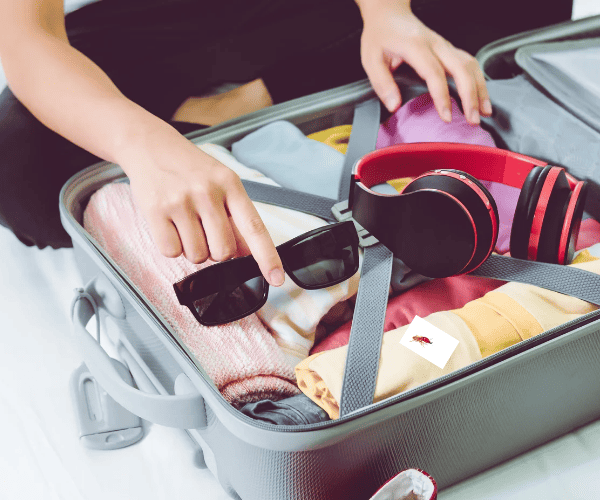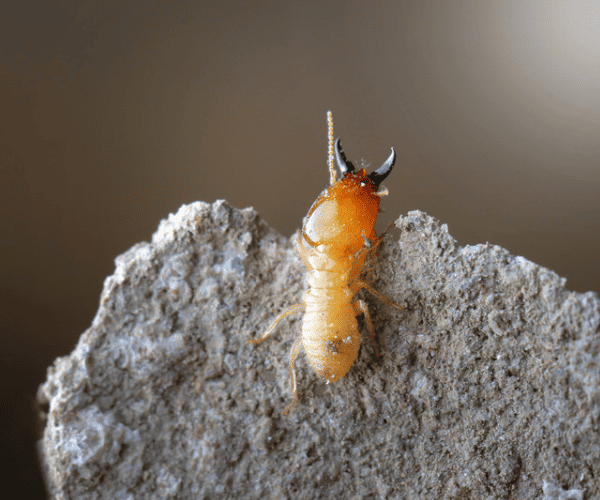Termites, those small but troublesome insects, are notorious for causing damage to homes. Yet, here’s a lesser-known concern: can termites sneak into your luggage while you travel? I listen to an expert in pest control, and I’m here to help you understand this potential issue and provide practical solutions.
Termites are experts at finding their way into wooden structures, but can they hitch a ride in your luggage? This is a real-world problem for travelers who want to prevent these unwanted guests from infesting their homes. In this discussion, we’ll explore the issue of termites in luggage and share some simple tips to keep your travels termite-free and protect your home.
RELATED: How To Get Rid Of Bed Bugs In Clothes And Luggage – Problem Solved
Termites in Luggage: What Travelers Need to Know
Termites are incredibly resilient and crafty creatures. They often reside in wooden structures, making it possible for them to hitch a ride in your luggage if it comes into contact with infested materials.
Understanding the Termite Threat in Your Luggage
When you travel to different places, especially those with a warm and humid climate, the risk of encountering termites is elevated. They might crawl into your luggage while it’s stored in a hotel room or during outdoor activities like camping.
Once termites make their way into your bags, they can unknowingly be transported to your home. The potential threat is clear – if termites infest your luggage, they could establish a colony in your residence, causing structural damage and significant financial consequences.
Therefore, it’s advisable to take precautionary steps to minimize this risk.
How Termites Can Infest Your Luggage
Termites infesting your luggage is a scenario that, while not common, should not be underestimated. These tiny but destructive pests can find their way into your bags through various means, posing a potential risk to your home.
We often think
Can termites travel through clothes?
Yes! Many clothing materials, especially natural fibers like cotton and linen, contain cellulose. Cellulose is a natural polymer found in plant cell walls and is a key component of materials like wood, paper, and cotton.
While clothing primarily consists of processed and woven fibers, the cellulose content is usually minimal compared to what you’d find in solid wood or paper products. However, even this minimal cellulose content can potentially attract termites, although it’s still less likely compared to more substantial sources of cellulose, like wooden structures.
Termites can easily access your luggage through contaminated clothing or items. If you place your bags on or near infested wooden structures, such as old wooden furniture or cabinets, termites may crawl onto your luggage. They can then burrow into the fabric, seeking refuge within the seams and folds.
Storing Luggage in Infested Areas
Leaving your luggage in spaces known to harbor termites, such as damp basements, wooden sheds, or garages with untreated wood, can be an open invitation to these pests. Termites might enter your bags when they’re stored in these environments, especially if your luggage has cracks or crevices where termites can easily gain access.
Unnoticed Termite Activity
In some cases, you may not even be aware of termite activity in your vicinity. Termites can be stealthy, causing damage to wooden structures that aren’t immediately visible. Consequently, they may unknowingly transfer onto your luggage during your travels, leading to an infestation in your home once you return.
How can we avoid termites in our luggage and Home?

Avoiding termites in your luggage requires a proactive approach to safeguard your belongings and your home from potential infestations.
By implementing these precautions, you can
Home Remedies To Treat Small Infestation

While professional treatment is often recommended for termites due to their potentially extensive and hidden damage, there are some home remedies you can try to address small infestations or as preventive measures:
- Boric Acid: Apply boric acid powder or solution to areas where you’ve seen termite activity. Boric acid can disrupt the termite’s nervous system and dehydrate them.
- Diatomaceous Earth: This fine powder can be sprinkled around areas where termites might enter. It causes dehydration and death when termites come into contact with it.
- Vinegar: A mixture of vinegar and lemon juice may act as a natural deterrent. It can sprayed around the area of termite activity.
- Orange Oil: Derived from orange peels, this oil can be effective against termites when injected into their
- Sunlight: Termites thrive in darkness and high humidity. Exposing infested furniture or wood to sunlight can kill some of the termites due to heat and desiccation.
- Essential Oils: Neem oil and tea tree oil are great for treating termites. You can apply the oil directly to areas where you suspect termites.
- Cardboard Trap: Wet a couple of flat pieces of cardboard and stack them where termites are present. The cellulose will attract them, and you can then burn the cardboard to dispose of the termites.
- Banana trees: If you are looking to save your home from termites you can also try the Banana tree hack. Just grow a banana in your lawn it helps to get termites away from your home
Final thought
There are very less chances that termites travel in your luggage but still when traveling and staying at a hotel need to take some precautions.
We have discussed above all scenarios in which you can bring termites to your home try to avoid these situations.

